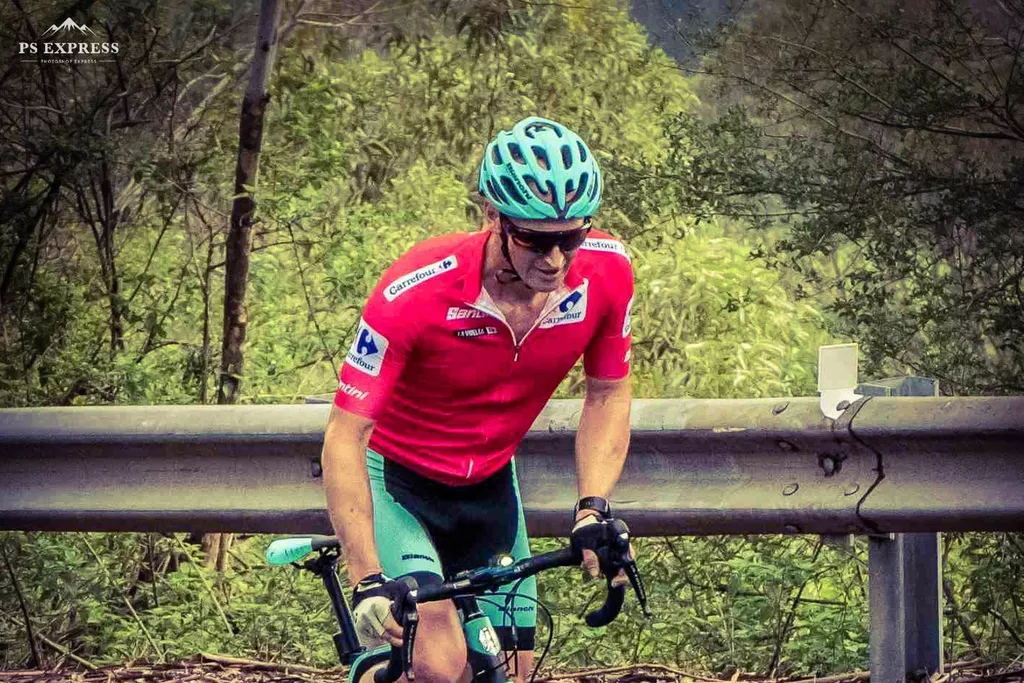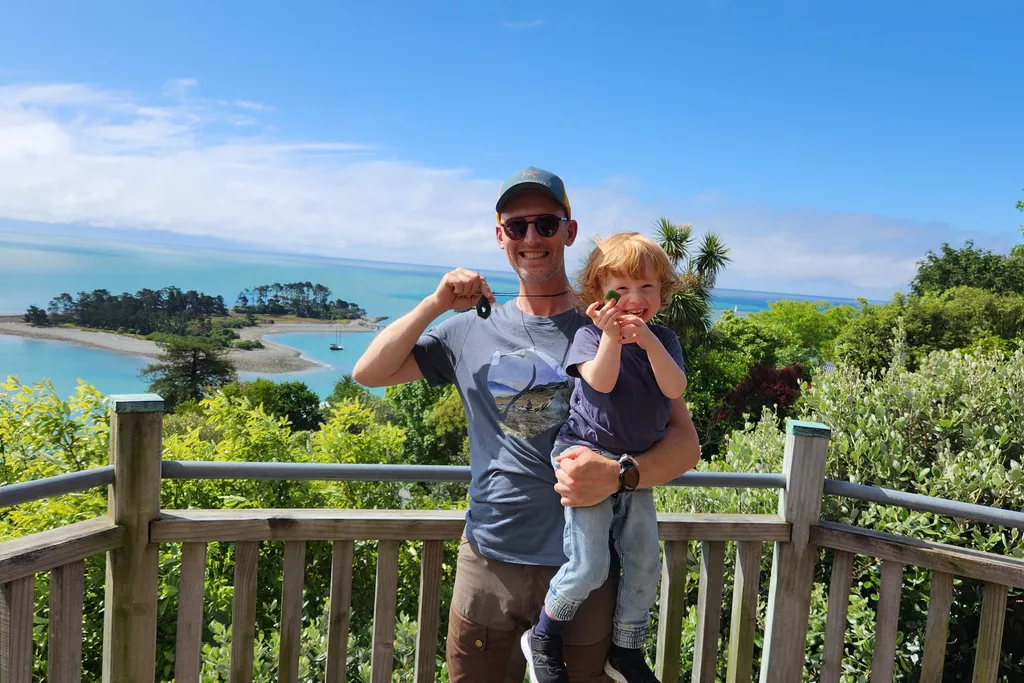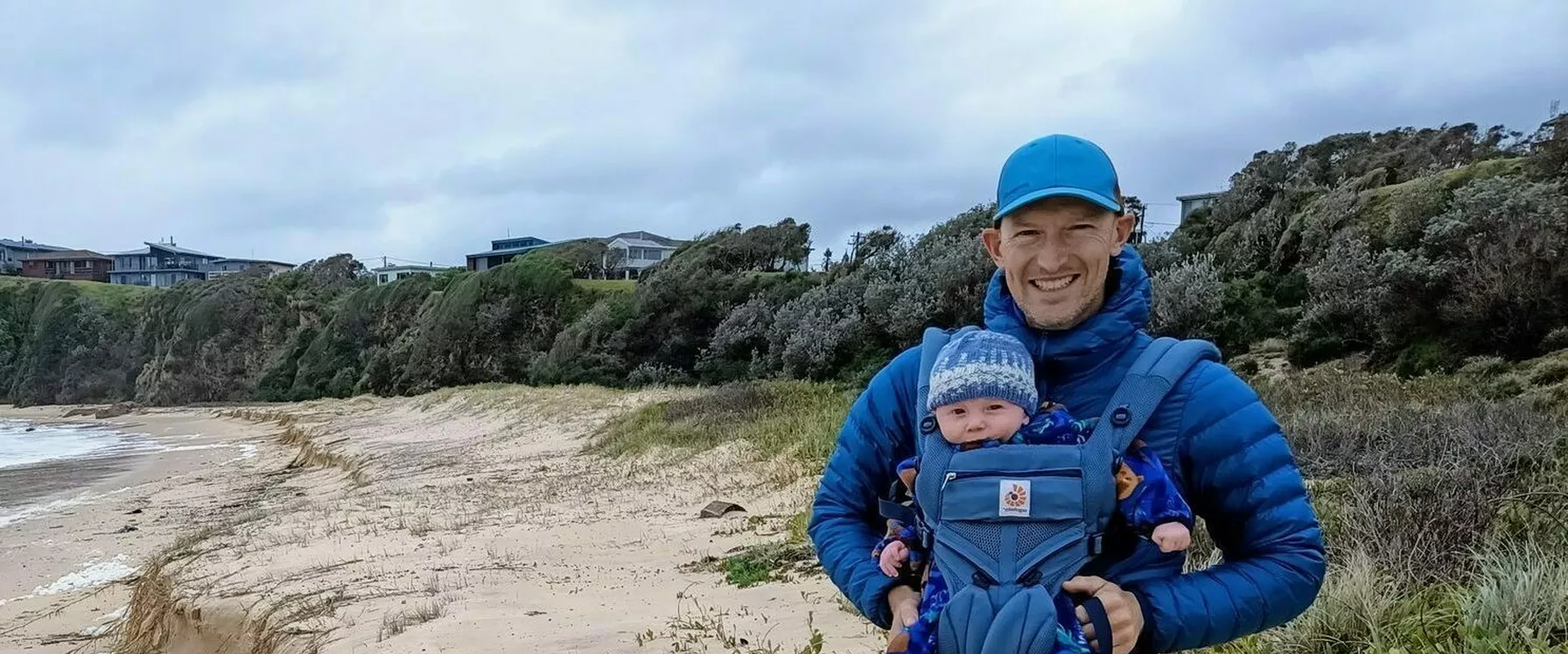"We still don’t really know why... Why did heart disease come for me?"
Matt Shields was not your usual suspect when he had a heart attack aged 40.
Reaching high performance levels within the Adventure Racing scene competing at several world series events like XPD and racing for a pro-am cycling team in Europe in his 20s, Matt didn’t see what was coming. No one could have predicted that he would suffer a devastating heart attack – or that he might never see his partner again or meet the baby boy they were expecting.
It was a normal winter’s day and Matt was planning his usual 15 km run to work. He had almost completed 6 months of training for the Rogaining World Championships in Alice Springs and was due to compete in a week’s time.
Matt had only just started his run when he felt an intense pain in his chest. He stopped in his tracks and realised he had to call an ambulance – he was having a heart attack.
While talking to the emergency services operator, who reassured him that an ambulance was on its way, Matt checked his surroundings, put on a brightly coloured jacket, connected his earpiece to his phone and sat in the gutter to wait. Meanwhile, people unaware of Matt’s plight continued walking and driving past.
“No one nearby came to my rescue. I was alone the whole time, so I focused on the ambulance arriving, which did take a bit of time.”
The paramedics immediately treated Matt in the ambulance while they rushed to the hospital where an emergency team was waiting to take him straight to the operating theatre. Matt had experienced a very serious type of heart attack where one of the heart’s major arteries had become blocked, known as an ST-elevation myocardial infarction (STEMI). Arteries supply oxygen and nutrient-rich blood to the heart and other organs. A stent was inserted to reopen the blockage in Matt’s artery, immediately reducing his pain levels. Eventually, he was discharged from hospital.
“Looking back, I was in really good shape physically, but I had struggled with feeling crappy over the past 6 months, so I did see several doctors for blood tests, ECGs and so on. Nothing was pinpointed, so I put it down to the training and getting old.”
Matt’s heart attack forced him to re-think his life. His clinicians were cautious, concerned about any resulting heart damage and a need for subsequent care. He was advised to take it easy.

Used to training, Matt began to retest his fitness but found he would continually get sick after pushing his body beyond its limits. After regular check-ups with his cardiologist, HRI’s Professor David Celermajer, six months after the event it was confirmed Matt’s health had stabilised. Matt began going on overnight hiking trips, slowly extending until he was hiking for six weeks at a time, to focus on regaining his strength.
While Matt seemed fit externally, the cause of his blockage was high cholesterol levels. Cholesterol is a waxy, fat-like substance. Excess amounts can build up on the artery walls, forming plaques that narrow the arteries. Levels can be managed by diet, but family history can also play a role.
“I changed my diet completely, cutting out any red meats and high cholesterol foods that I used to eat.”
Matt also moved from the city to the South Coast to be closer to nature and help manage his stress levels. To align with his health scare and all he had learnt from it, he also changed careers to work in the medical field, giving him a great sense of meaning and satisfaction.

Matt hopes the cutting-edge research by HRI and at its Fluxomics Facility will change the course of cardiovascular disease in Australia, sparing others from the trauma of his experience. He is acutely aware that his family history of heart disease could one day impact his son, Clancy.
“I hope that one day we will better understand heart disease and how all the individual things that make you you and me me play a part. I want Clancy to have all the personalised care and support he may need, should he face anything like this.”
For anyone else finding themselves in a similar health situation, Matt reiterates the steps he took in managing his health – become disciplined with a new diet, stick to your medication, and attend all the tests and checks your healthcare team recommends so your health progress is tracked closely. Matt also recommends looking for a cardiologist who is a good fit for you and your outlook, so you can see eye-to-eye with the progression of your care.
“Cardiovascular disease affects so many people. It might not take you at 40, like it tried with me, but it might affect you at 60 or 70."
How is HRI helping?
HRI is conducting innovative research to develop new therapies for heart attack.
Our Fluxomics Centre, led by Dr Sergey Tumanov, is devoted to identifying and exploring the cellular changes that are unique to each individual’s cardiovascular disease – with the ultimate goal of personalised methods to prevent, detect, and treat cardiovascular diseases like heart attack.
Our Coronary Diseases Group is investigating whether the anti-inflammatory drug colchicine, which has already proved safe and effective for treating conditions like arthritis and gout, can be repurposed to protect against repeat heart attacks. A collaboration between the Coronary Disease Group and our Clinical Research Group has also discovered that the heart releases certain substances during a heart attack that can be detected in the laboratory.
How you can help
Stay updated on HRI’s latest research and health tips: subscribe to our e-newsletter
Find out more
Understanding what is high cholesterol: signs & symptoms
High cholesterol levels can increase the risk of cardiovascular disease.

